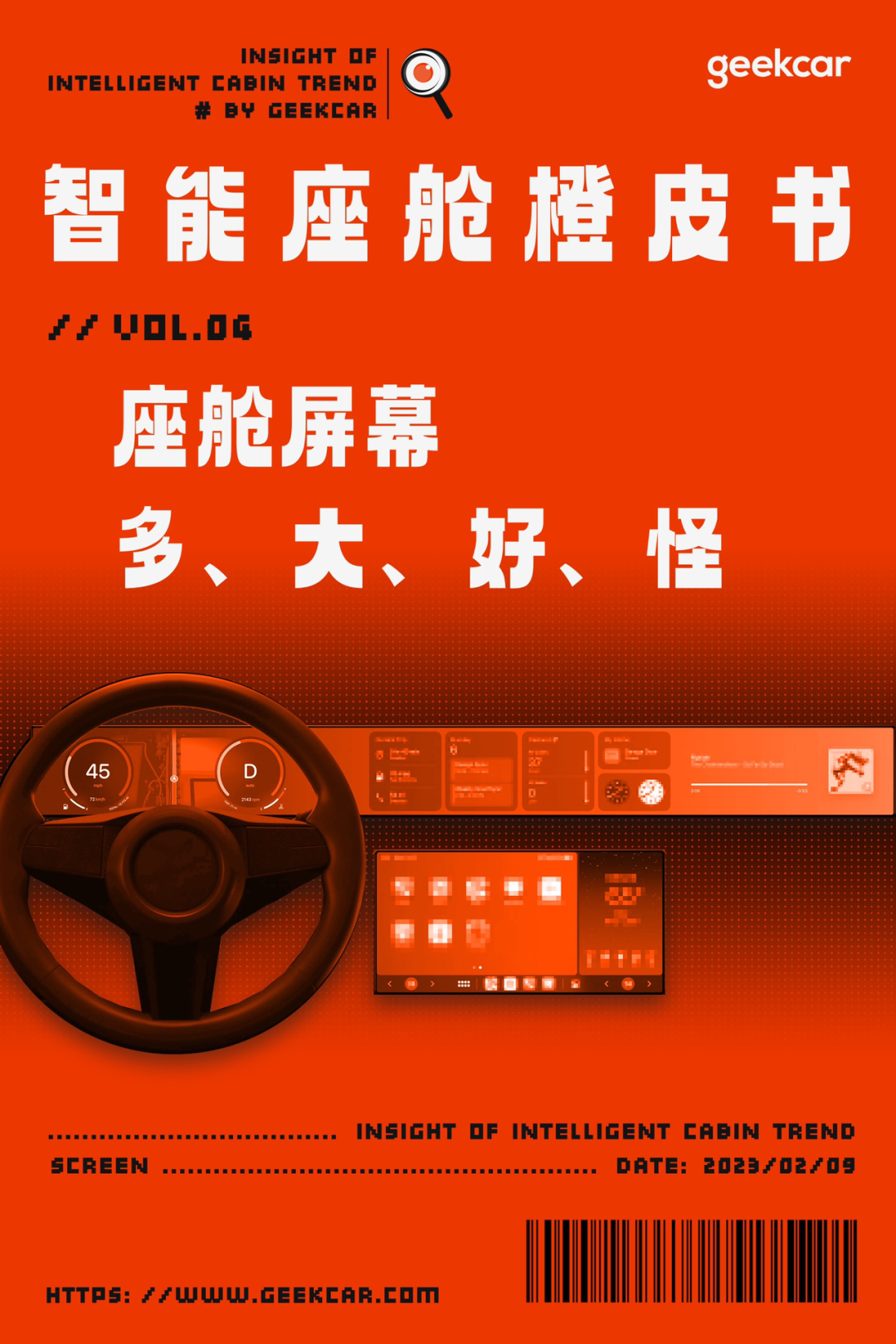Author: Mr.Yu
In the not too distant year of 2022, accompanied by the release of various eye-catching new products, we together reexamined topics that seemed distant just a few years prior, like “can you play games in the car?”, “can HUD replace a complete instrument panel?”, “is buttonless design reliable?”
Looking a little higher up, whether discussing scene-based or so-called third spaces, or even the future form and possibilities of intelligent cabins, one thing is impossible to escape – the in-car screen. Friends who pay attention to the industry and social networking can feel the heated discussion about in-car screens, which has reached an unprecedented density before 2022 and has been discussed more broadly.
While it may not be entirely neck and neck between intelligent cabins and in-car screens, they have at least helped each other to achieve great things.
On a busy workday afternoon before the Spring Festival, we had the opportunity to interview members of the FlyScreen R7 intelligent cabin product team, who have become a topic in the industry under the name “Screen Overlord.” In the midst of philosophical speculation, we verified insights into the trend of in-car screens while contemplating the new value these screens can bring to the cabin and the user.
How far has the in-car screen gone?
There has been a saying on social networks for a long time: what is an intelligent car, but a car with a tablet computer stuffed into the interior?
Even if we don’t criticize this inexplicable and misguided statement, we must say that you are underestimating car manufacturers.
Compared to the past, today’s in-car screen products show unprecedented changes – the number is increasing, the size is getting larger, the quality as a display hardware is getting higher, and the form is no longer limited to the tablet display itself.
After the popular Ideal One used a central control screen, a car control screen, and a co-driver entertainment screen that has replaced many physical buttons, the Ideal L9 used a HUD + safe driving interactive screen combination to complete the innovative idea of replacing the instrument panel, which was somewhat against convention in the automotive industry.
A safe driving interactive screen that uses car-grade Mini LED technology and multi-touch technology, is redundant with the HUD. This small screen not only displays necessary driving information clearly, but also achieves touch interaction, allowing for convenient and safe selection of various functions, including driving modes. Its interaction menu logic framework is very similar to that of wearable devices like smartwatches and smart bracelets. The operation of scrolling and switching interfaces with your thumb has a minimal learning curve, making it easy for users to quickly learn and master.
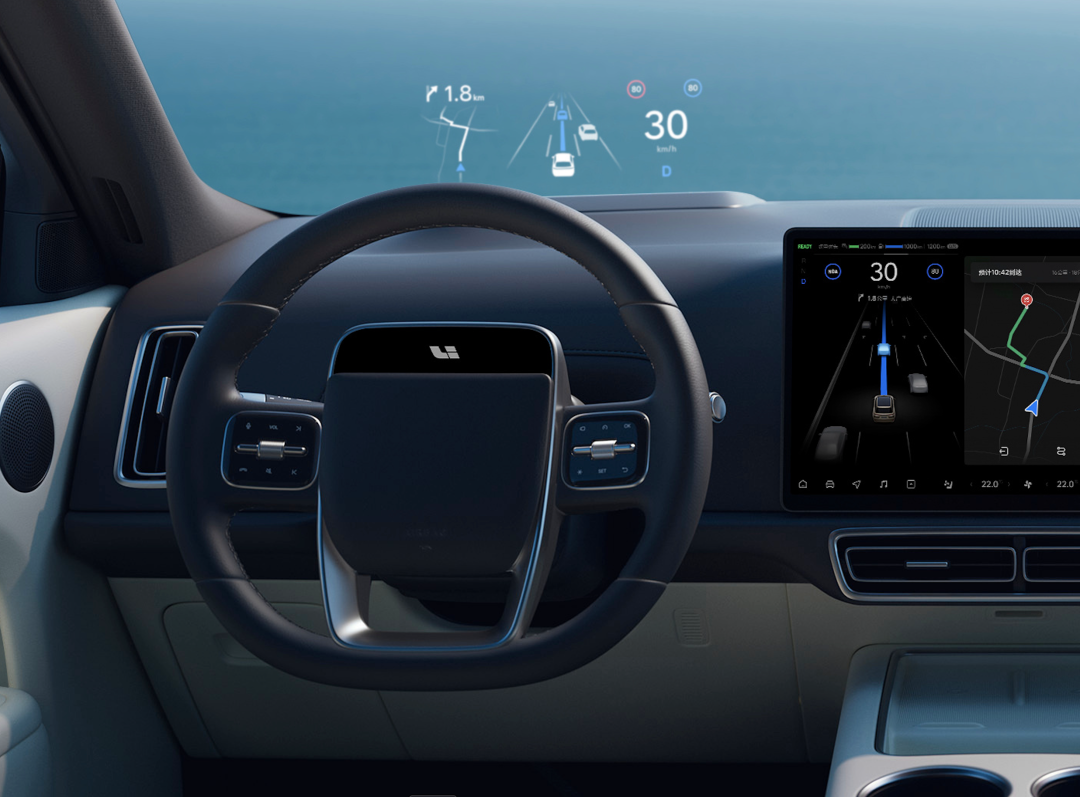
Not to mention the 15.7-inch car-grade OLED rear passenger entertainment screen that supports 3D ToF gesture control, which brought huge public attention to the Ideal L9 in 2022, making the existence of this car briefly famous.
Let alone the fact that the screen has gone beyond traditional forms and definitions. Since the conventional perception of a tablet can be a screen, then the HUD with an equivalent display area of 13.35 inches can certainly be a screen too. A car-grade mini LED display with multi-touch technology, serving as a safety driving interaction screen, can also be a screen.
Together, they form the visual part of the “Five Screens Three-Dimensional Spatial Interaction” concept that Ideal L9 emphasizes in its promotion.
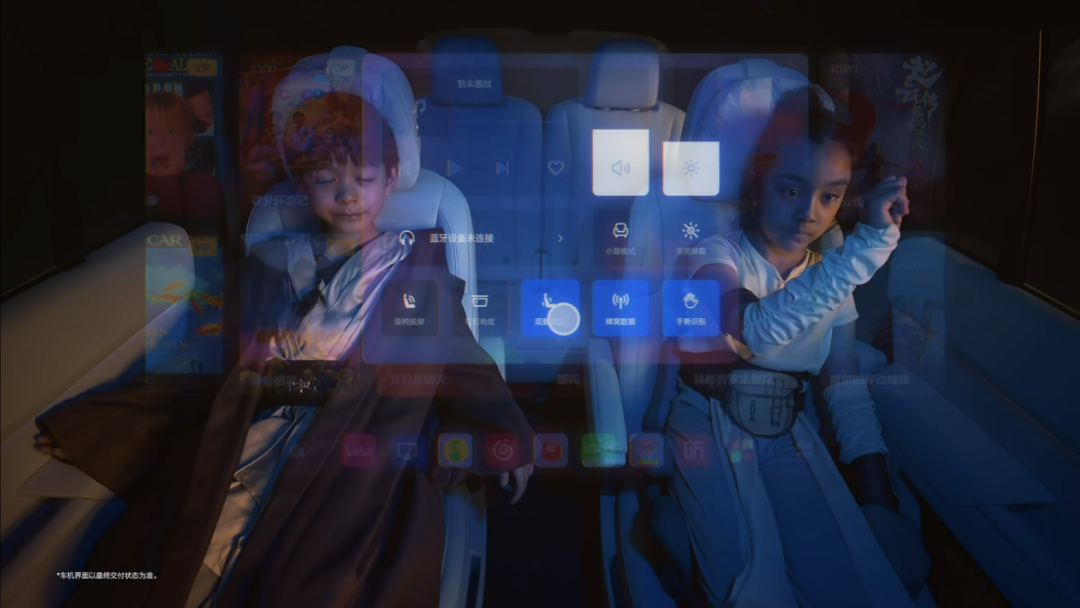
Of course, not everyone is a fan of the trend for multiple screens in a car.
In mid-2022, industry leader He XPeng publicly expressed his opposition to the idea of “many screens in a car”. He thinks that “the premise of having many screens is that there are many people in a car. However, the number of people in a car and their screen usage varies, which does not provide much value for returns on investment”.
Hundreds of answers on Zhihu (a Q&A website like Quora) from various fields and media outlets where people expressed their opinions followed. The conclusion was rare and largely agreed: partially or wholly agreed.
Although the Little Xpeng G9 that later became a hot topic in the industry retained the instrument panel while employing a dual 14.96-inch linked screen design. In terms of numbers, it does seem slightly more “rational” with three screens.
Of course, screen hardware is only the beginning. In Xpeng’s brand promotion, the 5D music cabin of the G9 adjusts ambient lighting, speaker matrixes, air conditioning, fragrances, and seats to interact with the user’s senses and create a more immersive experience as the music and plot change.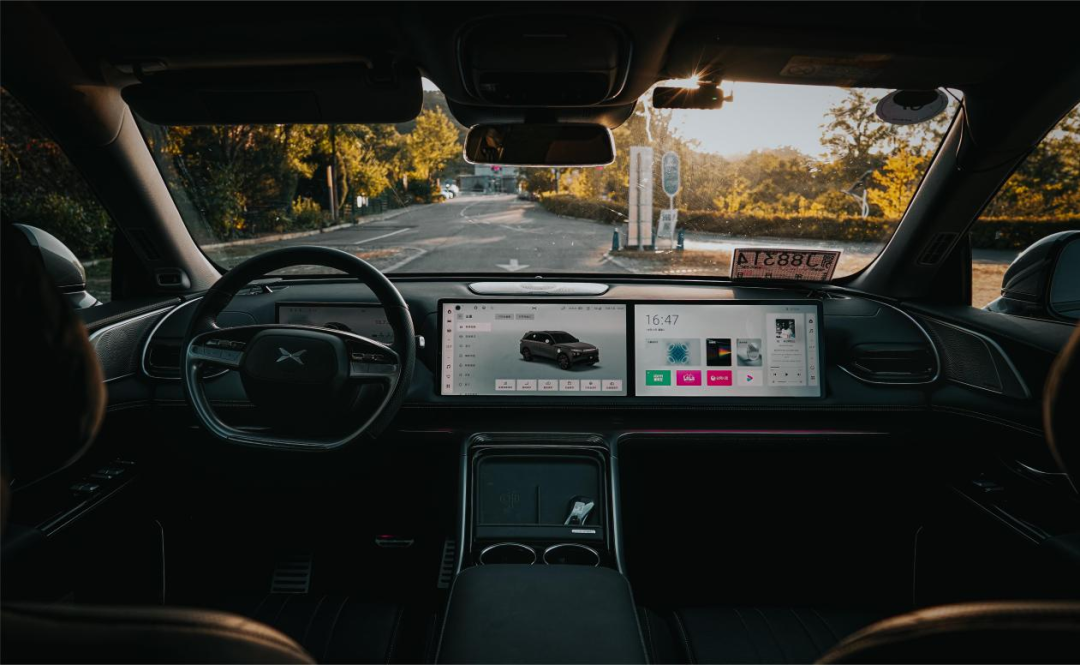
In 2022, on the yet-to-be-released Star Way “Strategic Model” Yao Guang, they have even played with the curved screen commonly seen on desktop monitors. Not only that, the brand also thoughtfully marked the screen’s curvature, highlighting the flexible screen from BOE and the gorilla glass from Corning in the United States.

Compared to other players in the industry, it seems like AITO spent a little conservatively by squeezing a 15.6-inch standard 16:9 tablet-like screen into the center of the cockpit when designing the Jie M5.
Not only does the screen loaded with the Hongmeng car OS look similar in appearance to a tablet, but the HMI interaction design, UI design, and the visual effects of all the software also resemble those of a tablet.
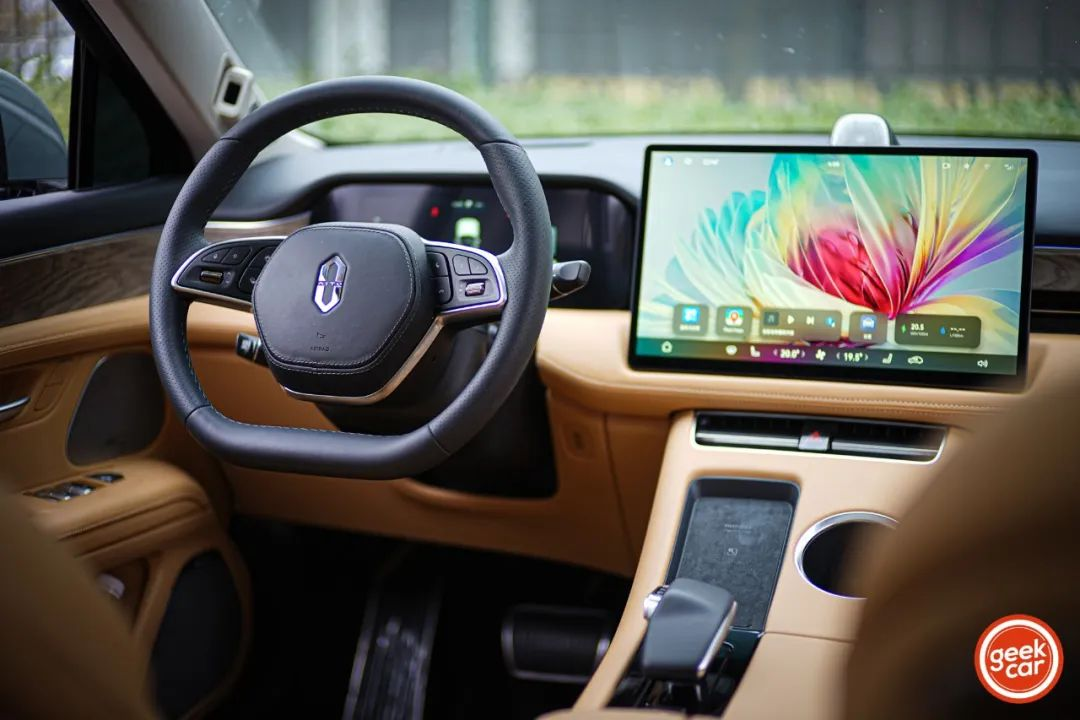
Of course, not every car manufacturer spends that much effort (cost) on the screen itself.
Geely’s LYNK & CO 06 Remix unveiled in early September features a 12.3-inch high-definition horizontal central screen with a rare design that leans towards the driver. The brand also reminds users that this relatively conservative onboard screen supports 85% NTSC color gamut display.
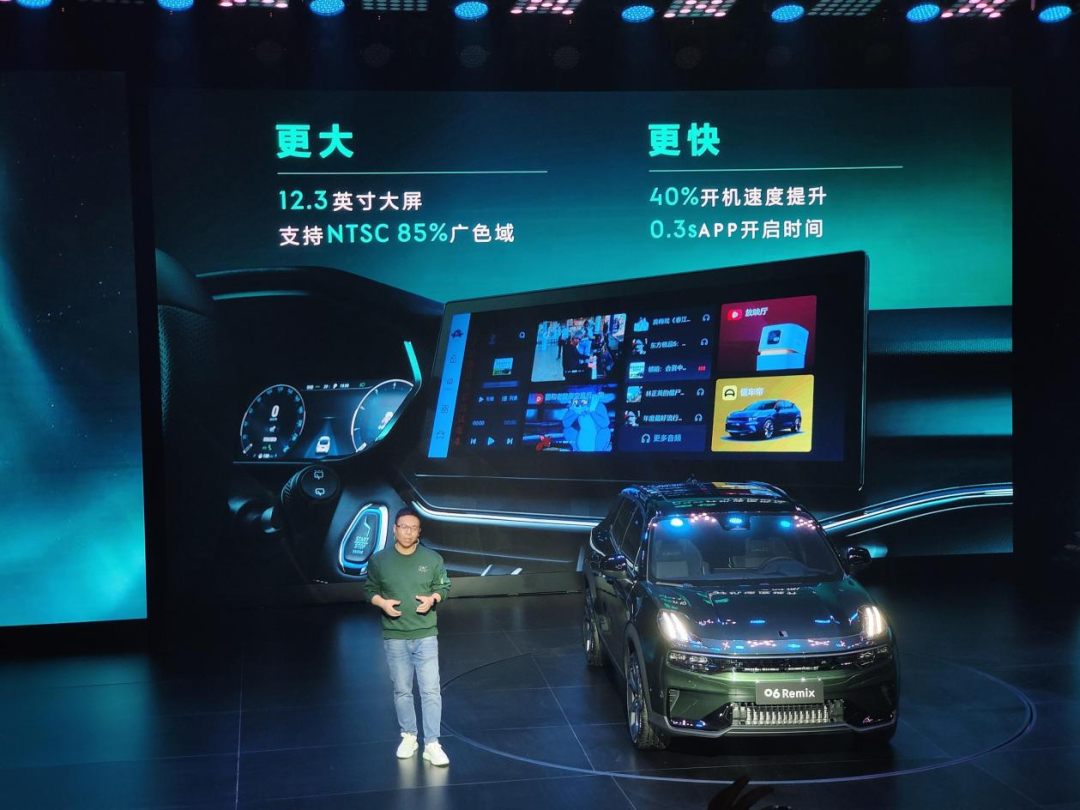
As a brand known for rigorous cabin experience, NIO is also preparing its own battle plan in this competition, which began with the number of screens.As an important part of the “PanoCinema panoramic digital cockpit” concept, NIO has collaborated with emerging AR supplier Nreal to create the dedicated device “NIO Air AR Glasses”. When connected via Type-C cable in the NT2.0 platform models (ET7/ES7/ET5/EC7/new ES8), the device can project a large screen equivalent to 201 inches at a distance of 6 meters and 130 inches at a distance of 4 meters, with a refresh rate of 60Hz.
Another VR headset announced at NIO Day 2021 is also likely on its way.
Why does an intelligent cockpit screen need to be a physical medium?
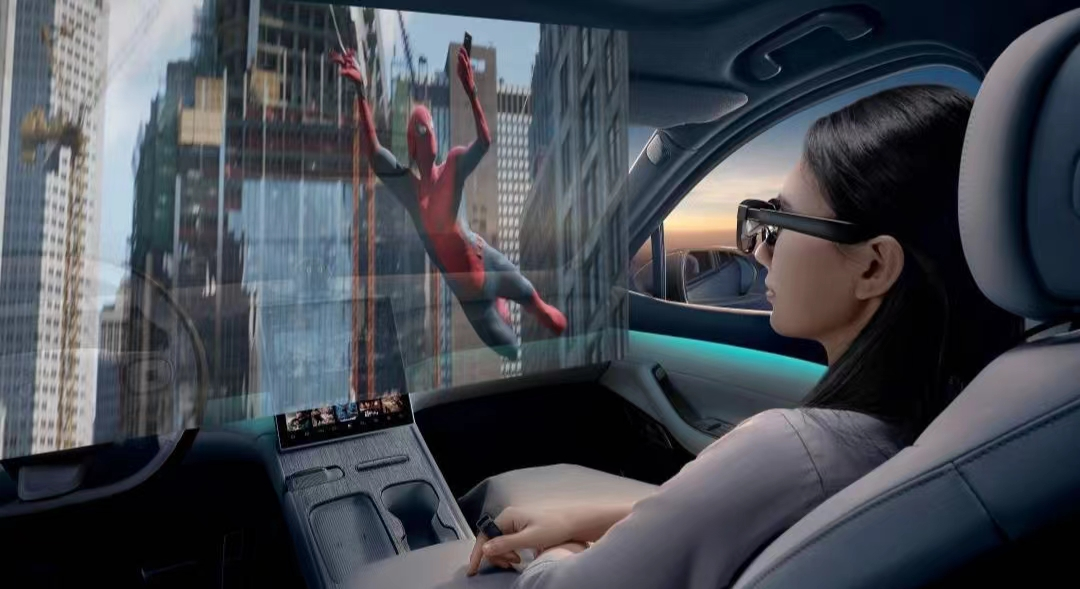
Let’s take a look at another hardcore player in the field of in-car screens.
When the FEIFAN R7 was unveiled in May, the media colleagues gave it the title of “material flagship”. The car attracted attention for both being the global first with a Huawei Vision-enhanced AR-HUD flat dashboard system, and for having a 43-inch widescreen true color three-panel display.
Soon after, the FEIFAN R7’s reputation as a “screen bully” spread. The 15.05-inch AMOLED ultra-clear central control screen in the cockpit provides characteristics such as a 2.5K resolution, 100% NTSC ultra-high color gamut, 60Hz refresh rate, 200PPI pixel density, 1,000,000:1 ultra-high contrast, and 180° ultra-wide viewing angle.

This screen, currently the longest domestic screen, uses the most advanced in-car display technology available today, setting a new benchmark for car machine screen quality. Even the Huawei-enhanced AR-HUD system can be used to play video content when parked, which is the result of the FEIFAN R7 product team setting extremely high requirements for core indicators such as AR-HUD display brightness.The things we see are just one aspect, just as it is almost impossible to put all product forms into one article while ensuring readability. However, the logic is the same. The change in the cabin screen is only superficial, and the fundamental reason is because people have changed.
Behind the screen’s rolling is a more hardcore reality
Do you remember the Mercedes-Benz EQS debut, and the eye-catching MBUX Hyperscreen that brought such strong visual impact that it was impossible to ignore its existence? At that time, a colleague in the editorial department joked that there was nobility and luxury flowing between every pixel.
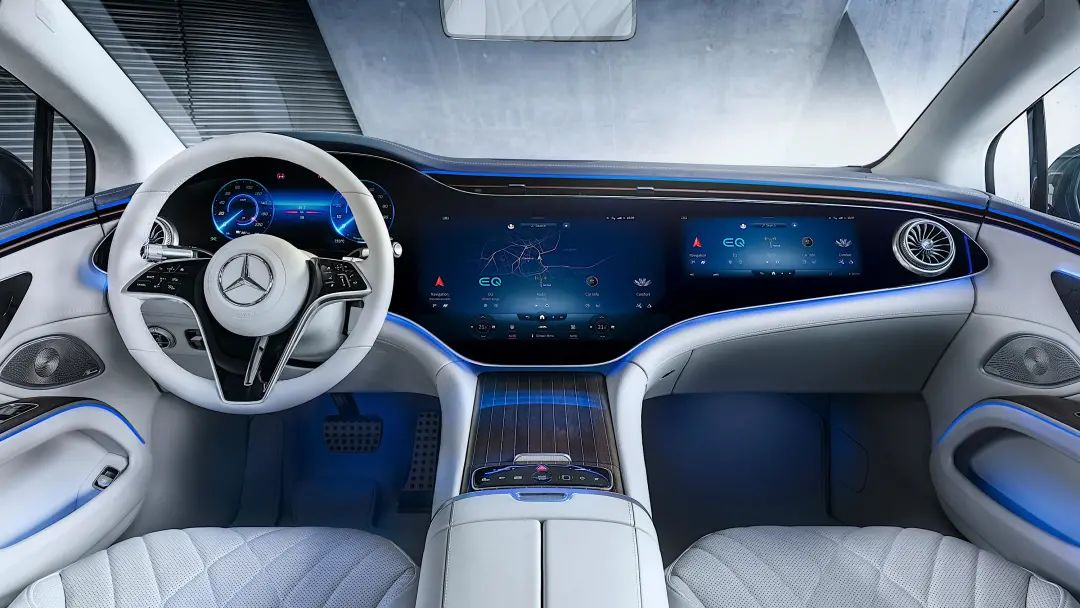
It is not difficult to see that even models priced at tens of thousands of yuan must mention in marketing in various ways about the car’s built-in screen, let alone those with higher positioning and pricing. Emphasizing size is almost standard operation, and elements such as materials, color gamut, refresh rate, contrast, viewing angle, pixel density, and support for HDR can all be discussed.
The increasing proportion of car screens in product marketing is not because the story of the car itself has been told, but because users’ demands have become more complex and diverse.
IHS Markit’s research on smart cabins shows that users’ demands for car cabins have shifted from emphasizing safety to demands for active intelligence, content, and services. On this basis, users are also willing to pay extra costs for entertainment functions, central control screens, and OTA payment.
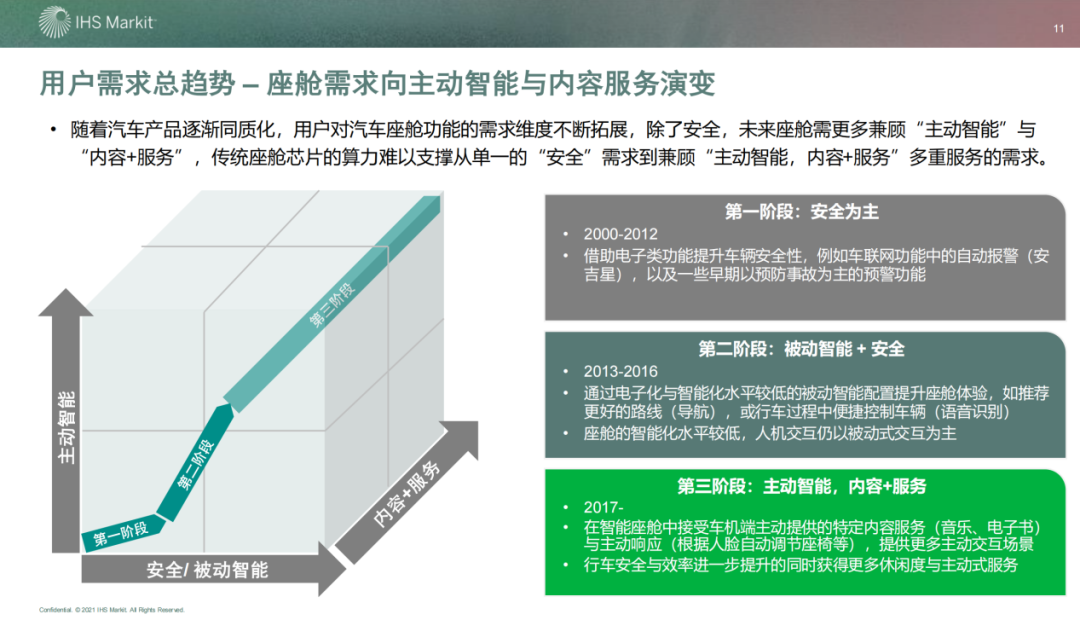
To a large extent, today’s car users’ clear perception of the built-in screen is because they have undergone a considerable period of “education” on electronic consumer products. From smart TVs to computer monitors, from smartphones to tablets, even if users can’t immediately tell which experience can be equated with those numbers and indicators, at least they will tell you intuitively that the higher the resolution and refresh rate, the better, and the narrower the border, the better.
Members of the Flyme R7 intelligent cockpit product team interviewed expressed that good screen quality is already a must-have today because users’ eyes have become very difficult to satisfy. Whether it is the increasingly delicate and complex mobile phone screens, or the large high-resolution TVs at home, most users can easily distinguish the quality of the display. In the face of this fact, whether it is the hardware-carrying content or the functions that the car manufacturer wants to provide to users, good display quality is a basic guarantee.
In contrast, size is no longer the only product attribute that can bring value recognition.
NIO is a typical example. The customized 12.8-inch cockpit screen used by NIO models has always been relatively restrained in terms of size, which is also the case in the entire industry. A professional NIO car owner told us that this screen and its carrying system can provide a good interactive experience, and can be appropriate, efficient, and unobtrusive. In the appropriate place, the appropriate existence, and the transmission of appropriate content to users, is the key to the future of in-car display ecology.

Some professionals believe that as the boundary between consumers’ perception of electronic consumer goods and in-car display devices becomes increasingly blurred, users’ recognition of in-car display quality, the convenience of operating systems, and the response speed and smoothness of systems will inevitably be actively or passively compared with electronic consumer goods.
After that, users will also have their own conclusions.
In the industry, there is often a saying that “hardware determines the lower limit of experience, and software determines the upper limit of experience.” However, both consumers and practitioners are easy to fall into some misunderstandings, such as:
-
Parameters and experience cannot be directly equated. Blindly pursuing parameters while ignoring matching content and interaction will have even more unfavorable effects;
-
Not many people know that contrast, color gamut, and brightness are the three parameters that are more intuitive and affect visual experience;
-
Not many people know that blindly pushing up the resolution and refresh rate of in-car screens will cause huge pressure on the calculation resources and transmission efficiency of the cockpit system.- Not so many people care that for car users, a pixel density of around 200PPI is already approaching the limit that the human eye can distinguish at arm’s length, and too high pixel density can not only lead to low yield at an industrial level, but also generate a large amount of heat during operation.
-
Not so many people care that for the excellent screen experience, similar to that of Mercedes-Benz, BMW, and NIO, often comes from first-tier suppliers’ customization. Car companies would pay a huge amount of cost. Even for the well-developed LCD screen, just the custom mold-making costs a million or two million dollars, while the OLED, which has been sought after by users and the industry in recent years, is ten times that of the former…
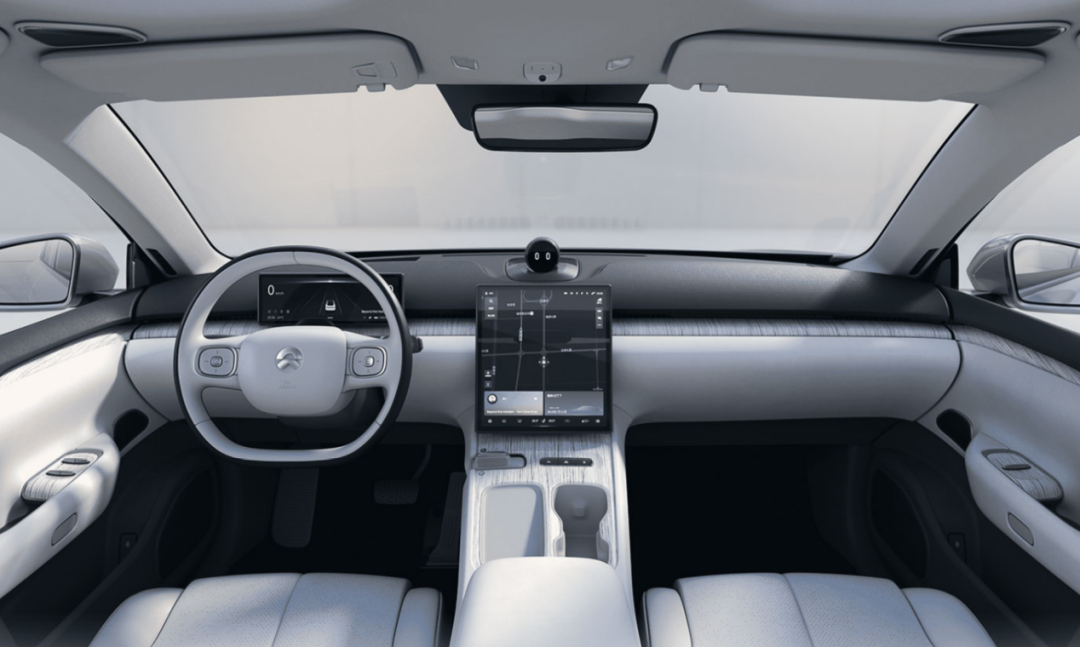
At the current stage of development, regardless of how powerful the hardware is, even with the gradual technological downgrades and price-friendly process, without adequate friendly visual and interactive designs to support, without high-quality and abundant contents to lay the foundation, it would basically deviate from the original intention of having a “good screen” and thus cause a waste of resources.
Due to the fact that the work environment of car-grade screens is much harsher than that of electronic consumer products like mobile phones, for example, the products of Haiwei Technology, a first-tier supplier of car-mounted screens, as an old friend of GeekCar, need to go through more than 100 tests, including high and low temperatures, vibration, dust, condensation, smoke, chemical corrosion, volatility, flame retardancy, EMC electromagnetic compatibility, ESD anti-static, from design to mass production and then to be recognized by car companies. Meanwhile, to prevent screen glass from breaking during vehicle collision and causing secondary harm to the driver and passengers, it needs to undergo complicated head impact tests.
Taking OLED screens, which are popular in the field of personal electronic consumer products, as an example, currently, the unit purchase price of mobile phone screens is around $30-$100, while that of car-grade screens needs to reach $500-$1000. In fact, based on the characteristics of the vapor deposition process used to manufacture OLED screens, the panel area of the screen is inversely proportional to their yield rate.
Assuming that a panel of a conventional car-mounted central control screen is the size of six iPhone screens of 6 inches each, if there is one bad pixel on the panel and it is sold to a mobile phone manufacturer, as long as the faulty part is processed and removed, five screens can still be sold, and the yield rate reaches 5/6, while for car companies, the yield rate of the screen with the bad pixel can only be 0.According to industry insiders, Mini LED has more potential than OLED to become the mainstream solution for in-car screens. Mini LED can achieve the same level of color and contrast as OLED, while being able to achieve more than twice the brightness of OLED with greater resistance to screen burn-in, making it more durable and reliable. Mini LED may replace OLED as the next trend in in-car screens at some point in the future.
At the same time, with more and more car companies entering the screen market, OLED production capacity worldwide may face huge pressure and could potentially fall into short supply. The huge demand for OLED screen materials from car companies, compared to the profit that material suppliers can gain from consumer electronics manufacturers such as smartphones and tablets, creates a paradoxical supply-demand situation.
Faced with such tremendous costs, car companies also have their own reasons to consider other options.
The Flyaudio R7 intelligent cockpit product team that was interviewed believed that in the entire visual space of the cabin, in-car screens occupy an important proportion, and the screen plays an essential role in expressing design aesthetics. In practical use, whether it’s static wallpaper and visual design, dynamic content playback, or even some user-customized and personalized requirements, they all need to be realized through good screens.
Just as OTA upgrades provide cars with more possibilities, such as more exquisite interface design, more exquisite system wallpapers, higher-definition and more diversified streaming media audiovisual experiences, a hardware layer of redundancy is of course essential to support these features. The screen, as the main carrier of the human-machine interface, is even more critical.
As a durable consumer product, cars should provide users with as much space as possible to expand their experiences during the service cycle.
This is the truth about the intelligent cockpit screen.
Conclusion
With the constant evolution of hardware and software, as well as the influx of talented individuals from the internet industry to the automotive industry, these have become the foundation for users to obtain a richer experience in the car cabin.
Should we stick to the idea of multi-screen or just use one big screen?
Besides screen quality, what else will car manufacturers bring to the table?
Can AR-HUD provide entertainment experiences besides driving?
Besides watching movies and playing games, will there be more AR/VR-based cockpit applications in the future?
I think these questions may not have immediate answers. However, since car manufacturers have taken all physical button interactions and put them into screens or systems, the wheels of history have already begun turning.
This article is a translation by ChatGPT of a Chinese report from 42HOW. If you have any questions about it, please email bd@42how.com.
